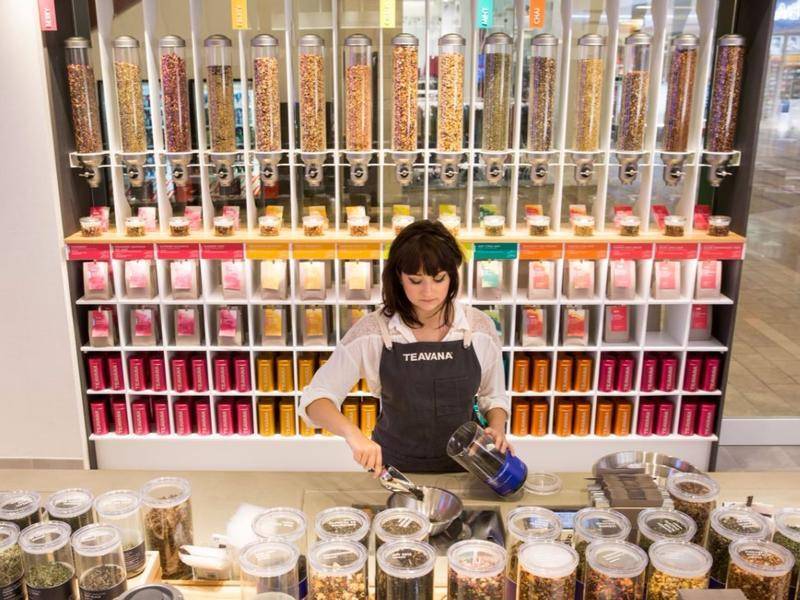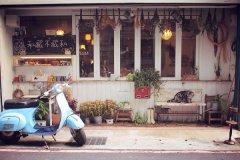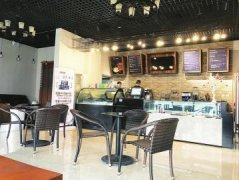Is it harder to sell tea than coffee? All 379 Starbucks tea stores are closed!

For professional baristas, please follow the coffee workshop (Wechat official account cafe_style)
Selling tea and coffee are two different things, and it took Starbucks about four years, maybe more. Just this morning, Starbucks announced that it would close all its 379 Teavana tea stores, indicating that the company's plan to enter the tea industry ended in failure.
Starbucks said it would close all Teavana tea stores in the coming year, most of them by next spring. The affected 3300 employees will be "given the opportunity to apply for positions in Starbucks stores", and Starbucks stores will continue to sell Teavana teas.
This may not be a beautiful ending, but we need to look back at Teavana's years at Starbucks and Starbucks' dream of selling tea on it.
Many people may not know that in the beginning, in 1971, the sign of the historic Park Market in Seattle, the first Starbucks store, read "Starbucks Coffee Tea & Spices." perhaps from the beginning, Starbucks did not intend to let go of the world's second largest beverage market. So in 1999, Starbucks bought Tazo, a tea producer and distributor.
However, when it comes to the real attack on the tea market, it is already 2012.
In 2011, Starbucks made a major decision to remove "coffee" from logo, which means that although coffee is still the core business and symbol of Starbucks, the company is trying to make the coffee flavor lighter. So that year, Starbucks bought bread company Bay Bread and its coffee shop La Boulange, then Evolution Fresh, a small California juice company, for $30 million, and then Atlanta-based tea retailer Teavana for $620 million. This time, Starbucks made a slogan to run tea like "coffee."
In acquiring Teavana, Starbucks acquired not only the brand, but also its nearly 300 direct sales stores around the world. Teavana's original model is probably: global procurement-allocation of special tea-building brand-distribution and quality control-online and offline channel sales. But like the vision of "running tea like coffee", Starbucks doesn't want to just sell tea bags in coffee shops or Teavana stores. So in October 2013, the first Teavana tea bar opened in one of the wealthiest neighborhoods in Manhattan.
Starbucks seemed confident about the tea business and quickly set its own small goal: to open 1000 Teavana stores around the world within five years.
However, things did not work out as expected. Starbucks' tea business has not been booming, especially compared with the main business of selling coffee.
In January 2016, Starbucks announced that four of the five tea bars would be closed. Three of the tea bars in New York will be converted into Starbucks coffee shops by the end of April, while the one near Beverly Hills in Los Angeles will be completely closed. The five tea shops left only one in Seattle as an "experimental site". At about the same time, however, Starbucks focused its hopes on the tea market in China, when there were media reports that Starbucks would open its first store in China in the second half of 2016. As a result, there was no Teavana in China in 2017, but Starbucks did start selling Teavana tea in its Chinese stores.
The company is also anxious about Teavana's performance, and in April, Starbucks announced that it would "evaluate strategic options" for its beleaguered Teavana tea store. In the end, they attributed Teavana's poor performance to the decline of brick-and-mortar retail: most of these tea shops are located in shopping malls across the United States, where large shopping malls have struggled and traffic has dwindled in recent years because of competition from e-commerce and discount retailers. UBS estimates that 1/4 of US shopping malls will be closed in the next five years.
Scott Harlan Maw, chief financial officer of Starbucks, said at the time: "in the past few years, many mall retailers have been affected by the decline in passenger traffic."
Ring, our Teavana tea shop is not immune. " But that doesn't seem to tell the whole story.
In terms of business strategy, it seems to be deliberately keeping a distance from the Starbucks brand. In the Teavana Tea Bar, there are refreshments and light snacks in addition to tea, but there is no coffee, which means that when you enter the Teavana, you have consciously eliminated the option of coffee, but in Starbucks coffee stores, you do not have to face this kind of entanglement. Therefore, if a few friends want to find a place to sit down and talk, they will probably choose Starbucks rather than Teavana tea. After all, you can buy Teavana tea at Starbucks, but you can't drink coffee at Teavana Tea Bar, and the things in the tea bar are more expensive than Starbucks. This subset business, unless it can provide a very unique experience, really does not give consumers a reason to "favor one over the other", and Teavana teahouse obviously does not do enough.
In addition, the more important reason is that Starbucks itself may have made an over-optimistic estimate of how much young people like tea.
Important Notice :
前街咖啡 FrontStreet Coffee has moved to new addredd:
FrontStreet Coffee Address: 315,Donghua East Road,GuangZhou
Tel:020 38364473
- Prev

Cat slave paradise! The four major cafes where the cat store manager is in charge.
Professional baristas Please follow the Coffee Workshop (official Wechat account cafe_style) for cat slaves who cannot have cats, cat cafes have always been a healing mecca in their hearts. Choose a leisurely afternoon, enjoy delicious meals and drinks, and play with the lovely cat manager, just thinking makes people smile happily! After some selection and struggle, 4 selected must go to the cat shrine.
- Next

Coffee with you "may not be with you for much longer."
Professional barista communication please follow the coffee workshop (Wechat official account cafe_style) Coffee to accompany you, there is someone who can no longer accompany you. On July 26th, a sad news came from South Korea that the representative of South Korea's KH company, known as the king of coffee, committed suicide. The curtain of Jiang Xun's life slowly came down, and the famous chain brand coffee he built at that time
Related
- What documents do you need to go through to open a coffee shop? coffee shop coffee shop certificate processing process
- How to purchase Coffee beans in small Cafe how to choose a suitable supplier for domestic Coffee supply Company
- How to drink Starbucks Fragrance White Coffee? how to make Australian White Coffee? what Italian coffee beans are recommended?
- The Story of Flora Coffee: the name of Flora Coffee Bean and the implication of the Flowers on Florna Coffee
- How much does a cup of coffee cost? How much is the profit of a cup of coffee? What is the profit of the coffee shop in a year?
- Yunnan small Coffee, known as "fragrant Coffee", introduces the characteristics of Alpine Arabica Coffee producing areas in Yunnan, China
- 2023 latest Starbucks full menu price list how much is a cup of Starbucks coffee what is better to drink the most popular hot and cold drinks recommended
- Starbucks different kinds of Coffee Price list Starbucks menu 2023 Top Ten Best drinks in Starbucks
- Starbucks Spring praise Comprehensive matching Coffee Bean theme Story Packaging implication and taste description
- The cost of a cup of coffee latte American coffee cost price and selling price

